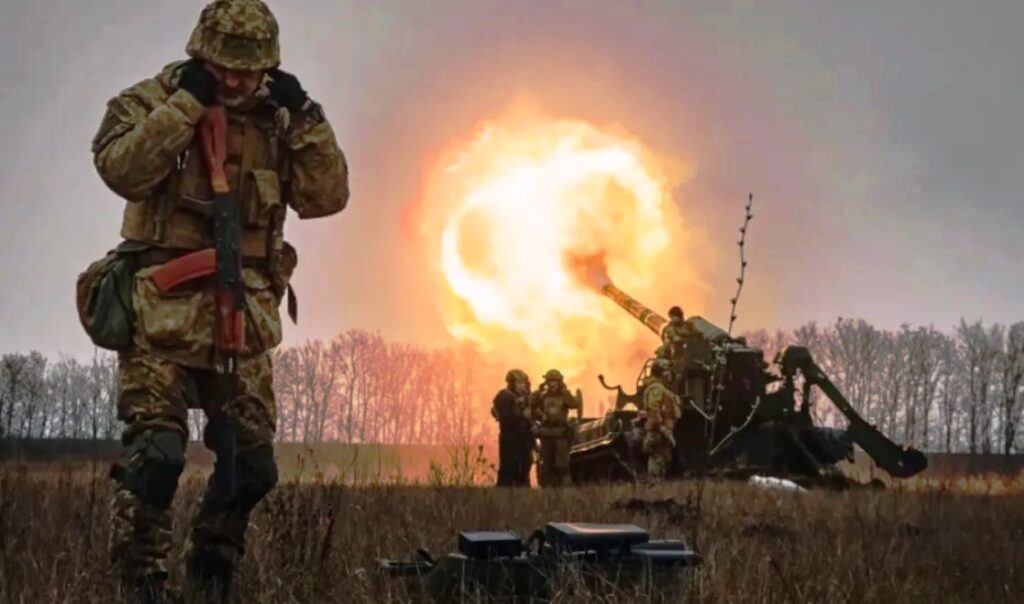Vladimir Putin‘s demands for Ukraine to cede the entire Donbas region highlight the critical question of any future negotiations: establishing borders that both sides can accept. Finding such an agreement remains extremely complex, as Ukrainian President Volodymyr Zelensky categorically rejects Russian proposals, citing the national Constitution that guarantees the country’s territorial integrity.
Ukraine steadfastly maintains its position for restoration of pre-war borders as they existed before the initial Russian invasion more than ten years ago. In contrast, Putin insists on pursuing full control of Donbas, creating a deadlock that characterizes current developments.
Any future agreement would require the official establishment of a 1,200-kilometer front line, which has changed dramatically over the years, with alternating successes for each side.
Ukraine: The Russian invasion of Crimea and Donbas
2014 marked the beginning of Russian expansion into Ukraine with the occupation of Crimea. Russian military forces seized the strategically important peninsula extending from the southern Ukrainian coast, while Putin proceeded with its annexation following a controversial referendum that received no international recognition.


Simultaneously, Moscow-backed separatist organizations captured significant parts of eastern Ukraine. Intense military clashes led to separatist control of approximately one-third of Donbas, where they established breakaway “republics.” Hostilities with the Ukrainian army remained along a relatively stable contact line until the full-scale invasion of 2022.
The major Russian invasion of 2022
Russia achieved impressive territorial gains during the first month of its full military operation in Ukraine. Russian forces secured an extensive territorial corridor connecting Crimea with Donbas, launched a massive assault on Kyiv, and advanced deep into eastern territory.

By the end of March 2022, Russia had achieved its maximum extent of territorial control in Ukraine since hostilities began.
Ukrainian counteroffensives and Russian retreat
After the failed capture of Kyiv, Russia withdrew from northern Ukraine in April 2022, focusing its military operations on Donbas. Ukrainian armed forces seized this opportunity and launched two decisive counteroffensives:
• Recaptured most of Kharkiv region in the east
• Pushed Russian forces south of the Dnipro River, retaking Kherson

By November 2022, Russia had been forced to abandon numerous areas it had captured in the initial stages of the war.
Donbas: The current situation on the front
Since then, Russia continues to advance along much of the 1,200-kilometer front, without achieving a decisive breakthrough of Ukrainian lines. Recently, Moscow recorded its most significant territorial gains since summer 2022, capturing over 500 square kilometers in July, according to independent source estimates.
Most Russian advances are carried out through small infantry unit attacks, often moving on foot or motorcycles, avoiding the use of heavy vehicles that make easy targets.
Despite recent successes, Russia remains far from achieving full control of Donbas, which the Kremlin defines as the Donetsk and Luhansk regions in eastern Ukraine. While controlling almost all of Luhansk, Ukraine retains more than 6,500 square kilometers of territory in Donetsk.
The Ukrainian area in Donetsk constitutes one of the most heavily fortified sections of the front and includes two major cities, Sloviansk and Kramatorsk, which have served as Ukraine’s military operational center since 2014. Any Ukrainian retreat from this area would mean the loss of critical defensive positions, while at least 200,000 Ukrainian civilians continue to live there.
Source: New York Times




